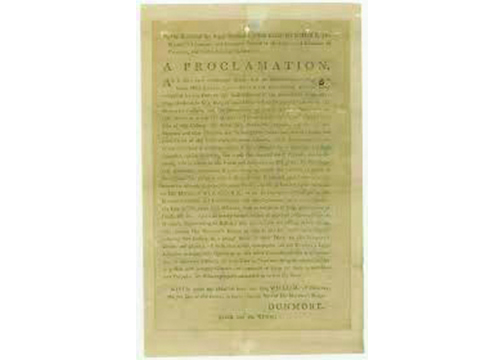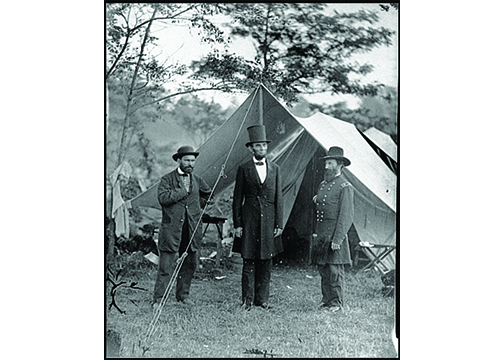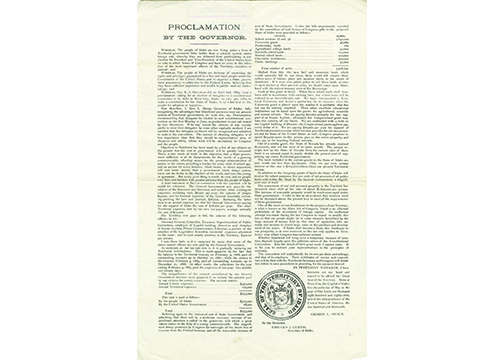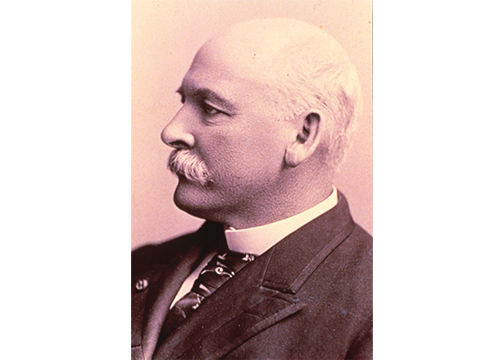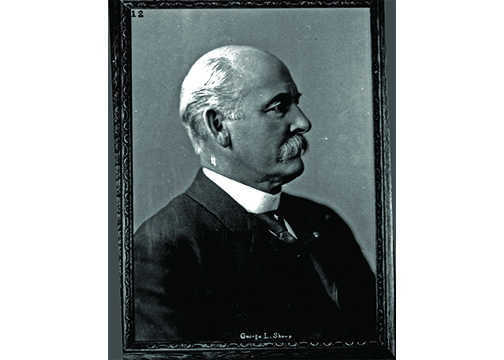
Illuminating Idaho Member Newsletter
Illuminating Idaho is the Idaho State Historical Society’s exclusive member newsletter, created just for history lovers like you. Each month, it shines a light on fascinating stories from Idaho’s past, highlights statewide historical happenings, and shares unique ways for members to get involved. It’s your inside connection to the people, places, and moments that continue to shape the Gem State.
Contact
(208) 334-2682
This Month's Illuminating Idaho
“I Do Hereby Proclaim”: The Impact of Governor and Presidential Proclamations in Idaho and American History
written by state historian hannalore hein
When leaders state, “I do hereby proclaim,” their words not only assert power but also tap into an enduring legacy in which public declarations have shaped American history, culture, and identity. Throughout American history, proclamations have served as powerful instruments of governance, illuminating and interpreting the prevailing spirit of their times. Legally, by definition, a proclamation is a formal, public declaration that an executive authority, such as a governor or the president, makes, which is often grounded in statutory or constitutional authority. This declaration may announce official business, policy changes, commemorations, calls to action, or states of emergency. While the specific language and authority granted to a proclamation may shift across eras and jurisdictions, their purpose endures: to focus public attention, articulate governmental intent, and sometimes to effect direct change. As we trace the lineage of significant proclamations from US and Idaho history, we are afforded insights into the complexity of American democracy and the legacy of executive power.
One of the most significant proclamations in American history predates the country’s founding. On November 7, 1775, as the American colonies teetered on the edge of separation from Great Britain, a single royal document issued from the deck of a battered warship off the coast of Virginia, ignited a spark that had been brewing. John Murray, Earl of Dunmore, and colonial Virginia’s last royal governor, issued the Dunmore Proclamation. This document established martial law and offered freedom to enslaved people who would flee from their patriot owners to join the British army.1 Close to two thousand enslaved and indentured servants answered the call, fleeing their bonds to fight. Although this proclamation applied only to the colony of Virginia, newspapers in all thirteen colonies printed it. This proclamation further united the patriot cause in Virginia, whose economy relied on the institution of slavery, and solidified in the minds of many the necessity of rebellion. Most significantly, however, Dunmore’s proclamation highlighted the themes of liberty and race, a linkage that would follow America throughout the Revolution and beyond.2
Nearly a century later, President Abraham Lincoln turned to the proclamation as a tool in his executive branch toolbox to alter the trajectory of American history, culture, and economy. His Emancipation Proclamation turned the Civil War’s purpose into a fight not only to preserve the Union, but also to end slavery where it still existed within the southern states. On January 1, 1863, Lincoln proclaimed that “all persons held as slaves” within the Confederacy, “are, and henceforward, shall be free,” upon the Union’s military victory in the conflict. Lincoln’s words imbued the deathly conflict with a moral imperative. Despite that the institution of slavery ended with the passage and ratification of the Thirteenth Amendment to the US Constitution in 1865, and the fact that during the era of Reconstruction, other obstacles emerged to maintain limits on freedom and equality for people of color, Lincoln’s executive edict reoriented the war’s purpose, deprived the Confederacy of labor and foreign support, and forever changed the nation’s moral trajectory.3
In Idaho, governors, including those appointed during the territorial era (1863-1890), also turned to proclamations. We now consider some of these proclamations as “signature documents” that direct our state’s founding. For example, Idaho’s 1889 proclamation calling for a constitutional convention stands as a landmark moment in the state’s history. The language of Governor George L. Shoup’s Call for a Constitutional Convention and Statehood, issued after the initial call by Governor E.A. Stevenson, underscores both the solemnity and the strategic foresight behind the action, and has direct ties to America’s revolutionary era. It reads, “Whereas, the people of Idaho are now living under a form of Territorial government little better than a colonial system under foreign rule…and, whereas, [they] are desirous of exercising the rights and privileges guaranteed to a free and loyal people under the Constitution of the United States, and to organize a State government pursuant to admission to the Federal Union”.4 However, this proclamation did more than announce the election of delegates to the convention or the meeting in Boise; it asserted the collective will of Idaho’s people for self-determination. Shoup’s language recognized the advantages and responsibilities of statehood, including direct representation, access to federal resources, and the power to govern their own affairs, while emphasizing the unity of purpose required to draft a constitution worthy of ratification. By urging citizens to read and examine the proposed constitution carefully and to cast their votes “without prejudice,” the governor’s words placed procedural integrity at the center of the transition.
Shoup’s 1889 proclamation signified a turning point in Idaho history. It legitimized Idaho’s bid for full inclusion in the Union, harmonized all “conflicting interests,” and demanded broad civic participation in shaping the state’s foundational laws. Within its text, the governor invoked both legal obligation and community spirit: “In testimony whereof, I have hereunto set my hand and caused to be affixed the Great Seal of the Territory,” establishing the moment as one rooted in legal authority and vision for the future.
Proclamations represent a powerful exercise of executive voice, illuminating how public declarations catalyze democratic action. Other significant proclamations, such as George Washington’s Neutrality Proclamation in 1793, articulated the fledgling republic’s stance in global affairs, asserting independence from ongoing conflicts in Europe. Since Washington’s tenure, American presidents and Governors have used proclamations to mark cultural milestones and honor historically significant events. The records of gubernatorial proclamations at the Idaho State Archives include the following proclamations:
- Constitution Week — September 17–23, 1971
- Citizenship Day — September 17, 1971
- Martin Luther King, Jr. Day — January 15, 1978
- Oregon Trail Month — August 1993
- United States Women’s Army Corps Week — August 22–28, 1971
- Afro-American History Month – February 1993
- Renaissance Week — February 26 – March 4, 1971
- Space Exploration Day — July 1994
- Idaho Inventors Week — 1990
- Idaho POW/MIA Recognition Day — September 1991
- Pioneer Month – November 1991
- Idaho Archeology Week – April/May 1994
While proclamations rarely carry the weight of law unless enabled by Congress, their symbolic power and ability to communicate, and sometimes shape, policy endure. These three proclamations, firmly grounded in statutory authority and public trust, are evidence of that, and remain foundational documents in America’s legacy. They reflect the larger American tradition of “I do hereby proclaim” as a vehicle for advancing liberty, shaping law, and forging the bonds of self-government. If you are interested in reading Idaho’s constitutional convention proclamation or other signature documents related to state history, please visit, https://idahohistory.contentdm.oclc.org/digital/collection/p16281coll33.
Bibliography:
“Idaho State Archives Digital Collections: America250 – Idaho’s Signature Documents.” November 1, 2025. https://idahohistory.contentdm.oclc.org/digital/collection/p16281coll33/id/40/rec/11.
“Lord Dunmore’s Proclamation, 1775 | Gilder Lehrman Institute of American History.” Accessed November 19, 2025. https://www.gilderlehrman.org/history-resources/spotlight-primary-source/lord-dunmores-proclamation-1775.
“Lord Dunmore’s Proclamation, 1775 · Document Bank of Virginia.” Accessed November 19, 2025. https://edu.lva.virginia.gov/dbva/items/show/268.
National Archives. “The Emancipation Proclamation.” October 6, 2015. https://www.archives.gov/exhibits/featured-documents/emancipation-proclamation.
Photos:
- Gardner, Alexander, photographer. Antietam, Md. Allan Pinkerton, President Lincoln, and Maj. Gen. John A. McClernand; another view. Maryland United States Antietam, 1862. October 3. Photograph. https://www.loc.gov/item/2018666255/.
- Lincoln, Abraham. Abraham Lincoln papers: Series 1. General Correspondence. 1833 to 1916: Abraham Lincoln, Tuesday,Preliminary Draft of Emancipation Proclamation. 1862. Manuscript/Mixed Material. https://www.loc.gov/item/mal1723200/.
- P2022-11-42b – Governor George Shoup
- AR1_bx20_f23 – Shoup Proclamation Constitutional Convention and Statehood (front)
- “Lord Dunmore’s Proclamation, 1775,” Document Bank of Virginia, accessed November 20, 2025, https://edu.lva.virginia.gov/dbva/items/show/268.
- Lord Dunmore, Joshua Reynolds, Scottish National Gallery, https://ushistoryscene.com/article/lord-dunmore/




